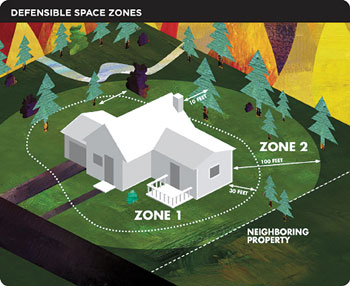By Mike Conrad, Aptos La Selva Fire Protection District

With us being in the fourth year of drought, any water we can get out of the sky is good. However, the springtime rains we had provide no real relief to the drought. The drizzly, cool days we often have along the coast are better than hot, dry days, but they still have no impact on the overall drought.
So why have the late rains increased the fire danger? The spring moisture has provided a bumper crop of annual grasses or 1-hour fuels. These grasses will dry out as we get into summer and provide an abundant supply of light fuels for fires to start in and then quickly spread.
Anyone with a fireplace, or who has built a campfire will identify with the fire starting process and the laddering of fuels. You cannot hold a match to a log (1000 hour fuel) and get it to burn. You can however get that log to burn by introducing ladder fuels. First you lay down a bed of small dry sticks (1-hour fuels) that will ignite quickly and easily with a match. On top of that you provide larger wood (10-hour fuels) and your log can be placed on top and in a short time the log – the 1000-hour fuel – will be burning.
So the late rains provided us with the small fuel to start fires. These grass fires will burn fast and hot spreading into larger brush. As the brush burns it will spread into smaller trees and then into larger trees setting the stage for a potential devastating wildfire.
This concept of laddering fuels is what the principle of “Defensible Space” is based on. We ask you to provide a defensible space of 100 feet around your home if possible. We ask you to keep the grass mowed, remove easily ignited fuels, provide space around shrubs and bushes, and remove the lower limbs of trees to reduce the likelihood of setting fire to the tree’s crown.
•••
For more information please contact your local fire department of visit the CalFire website at www.readyforwildfire.org